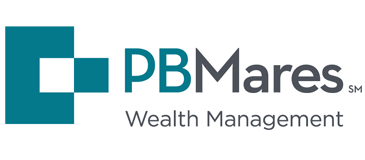I’ve always enjoyed managing my personal finances and being mindful that if I can make smart decisions today, they will have a significant impact in the later stages of life. I guess growing up in a home with a parent as a financial planner will have that effect on you. As a financial planner myself, people in their 20s often ask me, “what types of accounts should I be opening to save for retirement?” or, “how do I start investing?”. To my surprise, these folks aren’t always aware of the tools that are available to them as they start working for one reason or another. Not everyone is raised by a family with a financial services background.
Here are some ideas for those looking to get started:
Contribute to your company retirement plan: Find out when you are eligible to enroll in your company’s retirement plan and whether your employer offers to make any contributions on your behalf. With many retirement plans, an employer will offer to match a certain percent of your contributions to the plan. For example, if you choose to contribute 5% of your salary, your employer may offer to match 100% of your contribution, up to 3% of your salary. As a rule of thumb, it is worth considering contributing at a level that maximizes your employer match. Starting early is what’s important here, not how much. With time on your side, you have a longer period of time to let compounding work for you.
Utilize Roth retirement plan contributions, if available: Not all employer retirement plans offer this feature, but a growing number of plans do. Traditionally, retirement plans usually allow for employee contributions to be invested with pre-tax dollars, meaning taxes aren’t paid on these contributions until funds are distributed from the account. More and more plans are providing for contributions to be invested with after-tax (also known as, Roth) dollars, meaning that you pay taxes on your contributions today, without needing to pay taxes down the road when you withdraw the funds. Oftentimes, folks in their 20s are in some of the lowest tax bracket years of their lives. If there is a chance you’ll be in a higher tax bracket later in life, then contributing after-tax Roth dollars to your retirement plan may be something to consider. However, one thing to note is that if you contribute Roth dollars to your retirement plan, just know that most employers will not make matching contributions with after-tax dollars; they usually match your contributions with pre-tax dollars instead. You also do not get a tax deduction for your Roth contributions as you would with pre-tax contributions.
Open a taxable brokerage account: In addition to contributing to your employer-sponsored retirement plan, it might also be advantageous to contribute to what’s called a taxable brokerage account. These types of accounts are offered through companies like Fidelity Investments and Charles Schwab. The benefit for setting these up is the flexibility they provide. Unfortunately, many folks in their 20s often aren’t aware these types of accounts exist, yet they can be extremely helpful in accomplishing many of your financial goals. Essentially, you take funds from your bank account (after-tax funds), transfer them to the investment account, and then direct how they are invested. When you want to make a withdrawal, you are only taxed on the investment gains according to your capital gains tax bracket, which may be lower than your income tax bracket (if the investments sold are held for one year or more). Unlike retirement accounts, there is no 10% penalty for taking withdrawals before age 59.5. So, these accounts can be extremely useful when saving up for a house, saving up to buy a car, yet it can still ultimately be used to save for retirement as well. Flexibility is the name of the game here.
The cumulative benefits of these strategies grow exponentially the earlier you start and by being consistent with your saving. If you are overwhelmed by the thought of investing and saving for retirement, these steps should help you navigate the tools that may be currently available to you.
If you have any questions and/or would like to discuss these ideas further, contact us.
Author: PBMares Wealth Management




